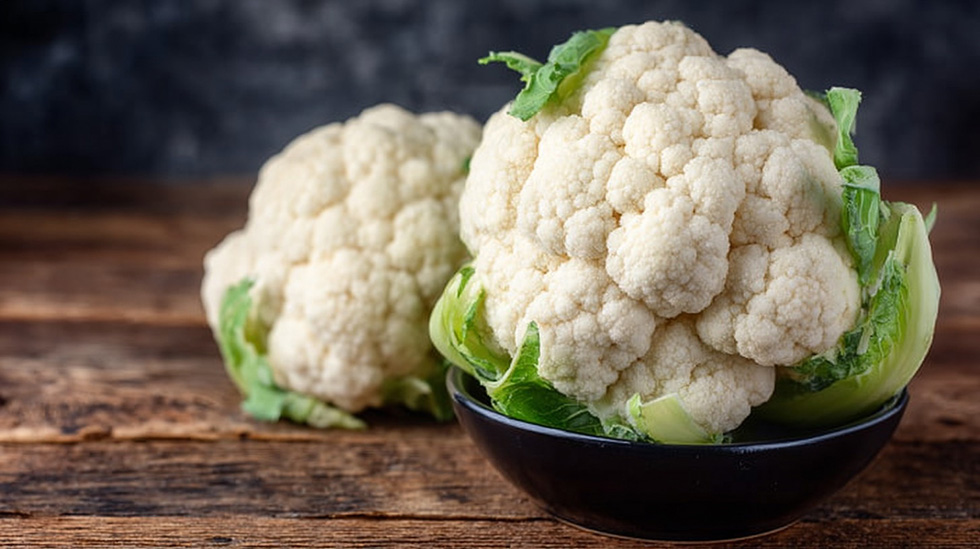Cauliflower – The white vegetable that never gets boring
Cauliflower, also known as cauliflower, Latin name *Brassica oleracea* var. *botrytis*, is one of the most interesting and versatile vegetables you can have in your kitchen. Related to broccoli, kale and brussels sprouts, it belongs to the cruciferous family and has been serving mankind for over two thousand years – not only as a food but also as a medicinal plant.

The ancient Romans also appreciated it, but it really comes from the Mediterranean region, especially Cyprus. From there it spread throughout Europe and then the world.
The importance of cauliflower in the kitchen: 4/5
Cauliflower is not necessarily the star of the kitchen, but if used well, it has huge potential. In Hungary, it’s mainly eaten as a stew, soup or stir-fry, but in other parts of the world it’s also used in pizza dough, rice and even vegan steaks. The great advantage of cauliflower is that it blends well with a wide range of spices and can take on many textures – crunchy, creamy, juicy or even crumbly.
Edible parts of the plant
The edible part of the cauliflower is the inflorescence itself, also known as the “rose”. This compact, whitish part is made up of many tiny, tender flower buds. It is best when the buds are still closed and the surface is homogeneous.
The leaves and some parts of the stem are also edible, although they are rarely used in the pot here at home. The fresh leaves, for example, make a great vegetable stock, but the thick stems are fibrous and difficult to digest, so avoid them. There are no poisonous parts, but over-aged cauliflower with yellowish or brownish spots loses its taste and texture.
Health benefits
Cauliflower is a vitamin and antioxidant bomb 💪
- Rich in vitamin C: one cup of cooked cauliflower provides more than 70% of your daily requirement.
- An excellent source of folic acid, which is particularly important during pregnancy.
- Contains vitamin K, which contributes to blood clotting and bone health.
- It is rich in phytonutrients and glucosinolates, which research shows may help prevent cancer.
In traditional medicine it is also used as a digestive aid, liver cleanser and anti-inflammatory.
Growing and season
Cauliflower prefers a temperate climate and is mostly grown outdoors. In Hungary, it is in its peak season in spring and autumn, and does not tolerate the heat of summer. The primary cauliflower appears from the end of May, while the autumn variety is on the market around September-October.
In Europe, the biggest cauliflower producers are France, Italy and Spain, which are also the source of imported cauliflowers in the winter months. In Hungary, you can find cauliflower from May to October, while in winter you can buy imports from Spain or Italy.
How to choose good cauliflower?
Choosing a good cauliflower is not difficult, just pay attention to the following:
- The colour should be snow-white or pale cream, without spots.
- Roses should be compact, closed, not spread out or soft.
- The leaves are fresh green and crisp – a sure sign of freshness.
- Avoid pieces that show brown spots, wilting or mould.
Storage tips
Cauliflower should be stored in the vegetable drawer of the fridge, loosely wrapped in plastic or paper bags. This will keep it fresh for up to 4-7 days. Do not wash in advance, as moisture will speed up spoilage. If you cut it up, it’s best to use it in 1-2 days or freeze it.
Cauliflower in the kitchens of the world
Cauliflowers are a passion in many parts of the world:
- In India, it is a common ingredient in curries and fried dishes (e.g. aloo gobi).
- In Italy it is used for pasta and oven-baked dishes.
- In France, it is baked with a cheese sauce in the form of gratin.
- In the US, cauliflower pizza dough and cauliflower “rice” is a favourite of health-conscious dieters.
Iconic cauliflower recipe: cauliflower gratin
This French recipe is all about indulgence: pre-boil cauliflower, cut into roses, then place in a buttered ovenproof dish. Cover with a cheese and béchamel sauce (butter, flour, milk, grated cheese), sprinkle with grated cheese and bake in the oven until golden brown. Add a little nutmeg or pepper and you can make a real main course or side dish.
Tips for using cauliflower in the kitchen
Cauliflower is a real jolly joker:
- Excellent for soups, purees – easy to blend to a creamy consistency after cooking.
- Breaded, fried, it can be a children’s favourite.
- Try it whole: season with curry, garlic and olive oil, then fry until crispy!
- It is also ideal for low-carbohydrate diets, as it can be used as a rice substitute.
Spices that go well with it: nutmeg, garlic, pepper, turmeric, curry, ginger, cumin, chilli. Not so much: aniseed-flavoured, sweet-tasting spices such as fennel or cinnamon – these will overpower the natural character of the cauliflower.
Summary
Cauliflower is not only healthy, it is an exciting, versatile and surprisingly creative vegetable. If you’ve only ever had it in soups or stir-fries, it’s time to try it in new forms. Whether grilled, baked or pureed, cauliflower will be a loyal companion in your kitchen. 🥦😉
